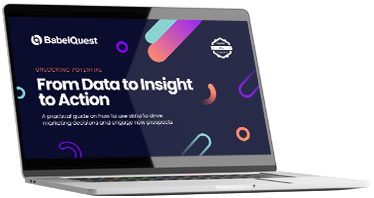If you work with or manage data, the chances are you’ve wrestled with duplicate properties before. You’ve added a contact, someone else has added the same contact, perhaps the contact has added themselves… Times that by a hundred contacts and the next thing you know, the CRM is a mess.
“This simple mistake [duplicate properties] can throw off segmentation strategies, send out incorrect email messaging, assign leads to the wrong sales owners, and throw off reporting, just to name a few outcomes of this mistake.”
HubSpot
Using HubSpot, you can create an ‘import template’ for use by your employees. With such a template in place, any CSV imported in HubSpot must adhere to its formatting conventions, with the column header corresponding to a property within HubSpot.
“As an admin, you can create and distribute a CSV template for your employees to use when importing information into HubSpot,” HubSpot writes. “With this solution, the column headers of the template will already match with existing properties in your portal, and your employees should never feel the need to create new properties in your HubSpot portal.”
If you think this would help, check out an example from HubSpot of an import sheet.
Minimise missing contact record information
Missing contact information or incomplete contact records are one of the most common data management challenges faced by organisations today. HubSpot helps you to nip this in the bud straight away by making it possible for admins to set up the fields that are seen when creating a record.
“Once those settings are saved, anyone who clicks Contacts > Create Contact will see those fields in their screen. The stars next to each field will indicate which fields are required in order to successfully create the contact,”
HubSpot explains
This is a great way of managing your data, especially as the company scales and the number of users creating forms increases. Data management loves consistency.
Keep deal records up to date
By their very nature, deal records move. (At least, you want them to!) But tracking that progression often relies on the salespeople involved going in and updating the record manually. This can be a lot to ask of an already busy team with quotas to hit. Our head of revenue, Eric Murphy, once described salespeople as being gripped by the ‘tyranny of the immediate’. They live in the moment. As such, little tasks like this slip through the radar.
HubSpot solves this by making it possible for admins to change pipeline settings in their portals. “By customizing the deal stage properties in their pipeline(s), anyone who tries to move a record to a different deal stage will be greeted by a pop-up asking them to update a deal property before they can successfully move the deal,” HubSpot explains.
This helps you to keep your deal records (as well as your revenue forecasting) up to date.
Control how many users (and which) can make changes
Back to Hannah, one our HubSpot CRM platform consultants, for this one, because she says it best:
“You might know this feeling all too well: your HubSpot portal has been around for a while, and while it was organised and functional when you first set it up, over time it’s started to become an unwieldy mess. You’ve had team members come and go, functionality has changed, and your portal is no longer fit for purpose.”
Too many cooks spoil the broth, as they say, and one wrong change in the back end can often have repercussions spanning the length of your portal.
HubSpot’s solution is to define user permissions for employees who work in the portal.
Some permissions you may consider changing for certain users:
- Import access
- Export access
- Workflows
- Assign View, Edit, or Publish Access to Marketing Tools
- Deals
“HubSpot’s solutions can help prevent messy portal issues from happening in the first place. They’re relatively straightforward to set up, and if you’d like some extra support, our Expert Practices team can help get you started today.”
Would you like a clearer idea of what requirements your new CRM needs to deliver? Download our free CRM scoping template, available now.




